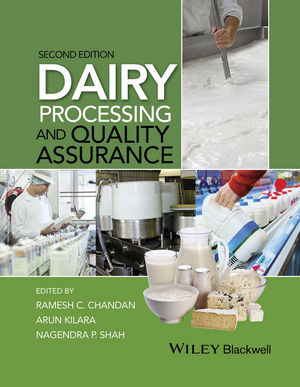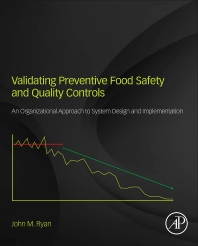Respond to Listeria threat with GMPs, vigilance

In May, Blue Bell Ice Cream signed agreements with state agencies in Texas and Oklahoma. The ice cream processor said its actions include rigorous facility cleaning and sanitizing, revised testing protocols, revised production policies and procedures designed to prevent future contamination, and upgraded employee training initiatives. There will be a “test and hold” program to assure that products are safe before they are shipped or sold. Photo for Dairy Foods by Vito Palmisano
Two outbreaks of listeria contamination this spring rocked the dairy industry.
First, Blue Bell Creameries discovered Listeria monocytogenes in Chocolate Chip Cookie Dough ice cream half-gallons produced on March 17 and March 27, and the company voluntarily recalled all ice cream, frozen yogurt, sherbet and frozen snacks across 23 states and internationally. In May, the Brenham, Texas-based company said it was laying off 1,450 full-time and part-time workers and furloughing 1,400 as a result of shutting down its production facilities in Texas, Alabama and Oklahoma. (Read the FDA’s inspection reports on dairyfoods.com.)
Next, on April 23, Columbus, Ohio-based Jeni’s Splendid Ice Creams announced a voluntary recall of ice creams, frozen yogurt, sorbets and ice cream sandwiches after listeria contamination was discovered in a random ice cream sample collected by the Nebraska Department of Agriculture.
Listeria is an organism found throughout the natural environment that has relatively mild impacts on otherwise healthy people between the ages of roughly 5 and 65. It can produce short-term symptoms like high fever, headache, nausea, diarrhea and abdominal pain.
But it can be fatal in young children, elderly or otherwise frail people, and others who have weakened immune systems; and it can cause serious complications for pregnant women, up to and including spontaneous abortions, said Tedd Wittenbrink, director of integration at Merieux NutriSciences Co., Chicago.
Listeria is rare, but that severity makes it a significant concern, said Martin Wiedmann, professor of food science at Cornell University, Ithaca, N.Y. Between 80% and 90% of people infected end up in the hospital and roughly 20% die, he said. “It’s a rare disease, but a common organism,” he said.
Listeria is seldom found in ice cream, according to the International Dairy Foods Association, given the use of pasteurized milk, stringent regulations involved, and multiple inspections each year at dairy plants by the U.S. Food and Drug Administration as well as state regulatory agencies. Ice cream makers institute their own Hazard Analysis and Critical Control Points (HACCP) plans to identify where hazards might occur and stop them, IDFA said.
Thriving in cold, damp places
But listeria presents more of a danger to dairy plants than other bacteria because it can grow in cold, damp environments, and on foods stored in the refrigerator, IDFA said. “Listeria is … one of those bugs you can find everywhere in nature,” said John Allan, IDFA’s vice president of regulatory affairs and international standards. “It’s in soil, it’s in water, it’s in plant material, it’s everywhere. It can get in [to a plant] any number of ways – people track it in on their shoes or on their clothes. It can come in on equipment carts or on pallets used to carry packaged products or ingredients.”
Dairy plants typically set up a “hurdle approach” to keep listeria out as much as possible, and under control when it does get inside, Allan said. This includes separating raw and finished sides of the plants and controlling employee access from one side to the other. Manufacturers place food baths and foam sprays on the floor and doorways, “so if you’re moving between rooms you’re forced through these areas and it sanitizes your feet,” he said.
Beyond that, companies thoroughly wash and sanitize equipment and areas adjacent to it, first cleaning off visible food residue and then continuing on to microscopic particles left behind, Allan said. This includes the use of scrub brushes for places not reachable by hand and cleaning chemicals that can be flushed down longer pipes, he said.
“People have sought to completely eradicate [listeria] from their facilities. I, for one, don’t think that is possible,” Wittenbrink said. “I am of the opinion that if you’re doing these environmental swabs and you’re constantly getting negatives, you’re probably not looking in the right place. I really do believe it’s in every operation, somewhere.”
Where to look for listeria
Listeria will get into a plant no matter how well it’s run, Wiedmann said. The trick is to constantly be on the lookout for spots, or niches, where it can survive undetected. If a plant doesn’t have a good strategy to clean its ceilings, for example, listeria can grow in the condensation. A conveyer belt with hollow rollers is another common example of a niche, as is a table with hollow legs, he said.
“No one’s going to completely sanitize the hollow legs,” he said. “With moisture it comes out, gets into the processing environment and gets transferred onto the product. You need sanitary design for the plant and equipment, and proper procedures, to make sure listeria doesn’t get a foothold.”
Wittenbrink suggests sanitizing “top to bottom,” including floors, walls, drains and areas that could host “pockets” of bacteria, as well as controlling where uniforms and footwear are worn, and enforcing those rules for everybody, even maintenance people.
“They go from raw to pasteurized, from pasteurized to raw, down the street to lunch wearing the same uniform,” he said. “That’s a tough pill for people to swallow when you say, ‘You can’t do that.’ But I’m pretty sure that people in Blue Bell, for example, would be more receptive to that. Until you’ve been through one of these things, you don’t understand how bad it can be.”
Swab and analyze
To test for listeria, IDFA recommends the use of sponges or swabs to sample areas all around the rooms, both on and close to the equipment. Usually these samples are sent out for analysis and returned within two or three days, Allan said. Typically companies do not test finished products because that amounts to a “needle in a haystack” proposition once you’ve taken all the precautions, he said.
Wiedmann said a regular environmental sampling plan is more important than which specific test you use. “You cannot run a cheese, milk, ice cream plant unless you have an environmental sampling plan for listeria,” he said. “I would typically recommend molecular biology tests because they’re faster and more accurate. At the end of the day, that’s less important than the design of the overall sampling program.”
Wittenbrink suggests focusing on four zones: product contact surfaces, other parts of the equipment, walls and floors near the equipment and product, and the warehousing and exterior areas.
“We’re all pretty good at cleaning the equipment,” he said. “It’s the environmental areas that tend to get overlooked — floors, walls, drains, end product and packaging areas. And then control the traffic going in and out of pasteurized areas.”
Looking for a reprint of this article?
From high-res PDFs to custom plaques, order your copy today!








